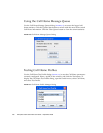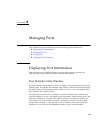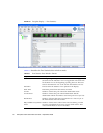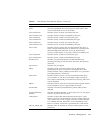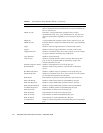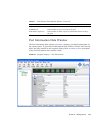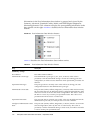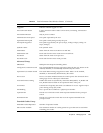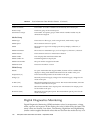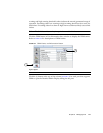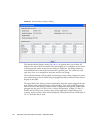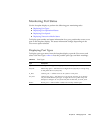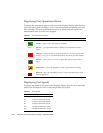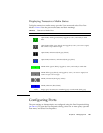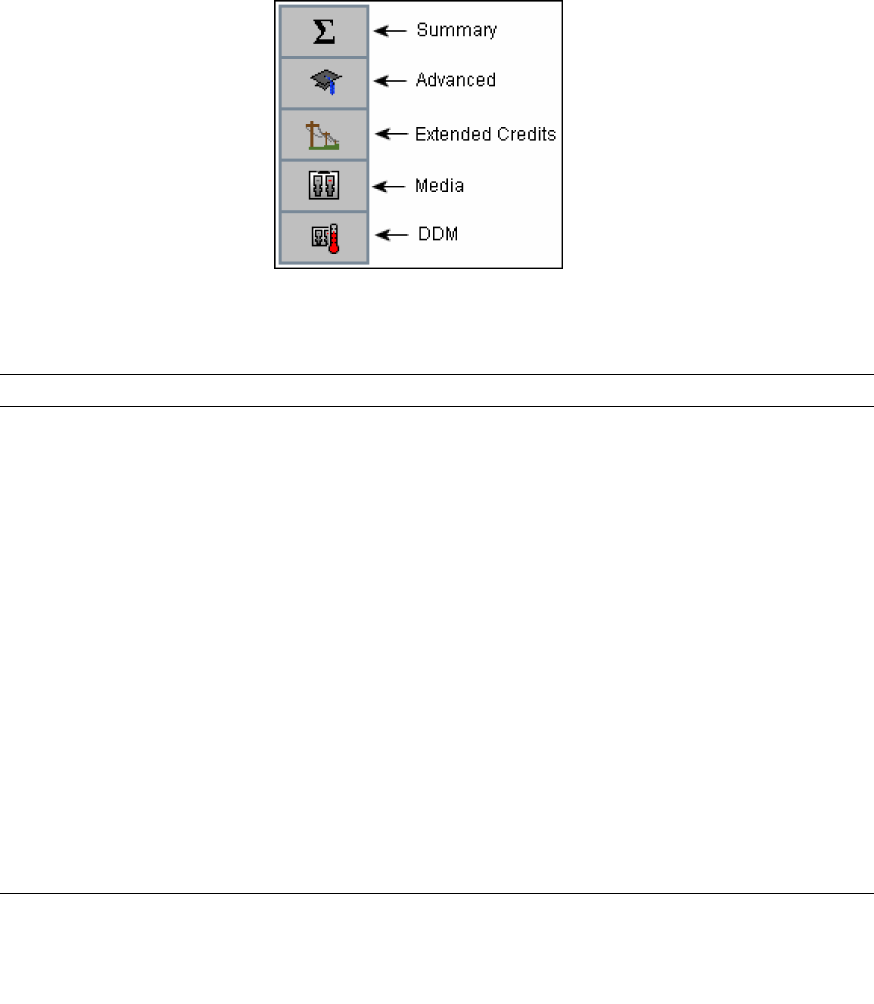
174 Enterprise Fabric Suite 2007 User Guide • September 2008
Information in the Port Information data window is grouped and viewed by the
Summary, Advanced, Extended Credits, Media, and DDM (Digital Diagnostics
Monitoring) buttons. Click a button to display the corresponding information in the
data window on the right.
FIGURE 6-3 describes the Port Information data window
buttons.
FIGURE 6-3 Port Information Data Window Buttons
TABLE 6-2 describes the Port Information data window entries.
TABLE 6-2 Port Information Data Window Entries
Entry Description
Summary Group
Port Address Port Fibre Channel address.
Administrative Port Type The administrative port type (G, GL, F, FL, or Donor). This value is
persistent; it will be maintained during a switch reset. During port auto-
configuration, it will be used to determine which operational port states are
allowed.
Operational Port Type The port type that is currently active. This will be set during port auto-
configuration based on the administrative port type.
Administrative Port State The port state (Online, Offline, Diagnostics, or Down) which has been set by
the user. This state may be different from the configured administrative state
if the user has not saved it in the switch configuration. This state is used at
the time it is set to try to set the port operational state. This value is not
persistent and will be lost on a switch reset.
Operational Port State The port state that is currently active. This value may be different from the
administrative port state, for example due to an error condition.
Configured Administrative Port
State
The port state (Online, Offline, Diagnostics, or Down) which is saved in the
switch configuration, either by the user or at the factory. This value is
persistent; it will be maintained during a switch reset, and will be used after
a reset to set the port operational state.



